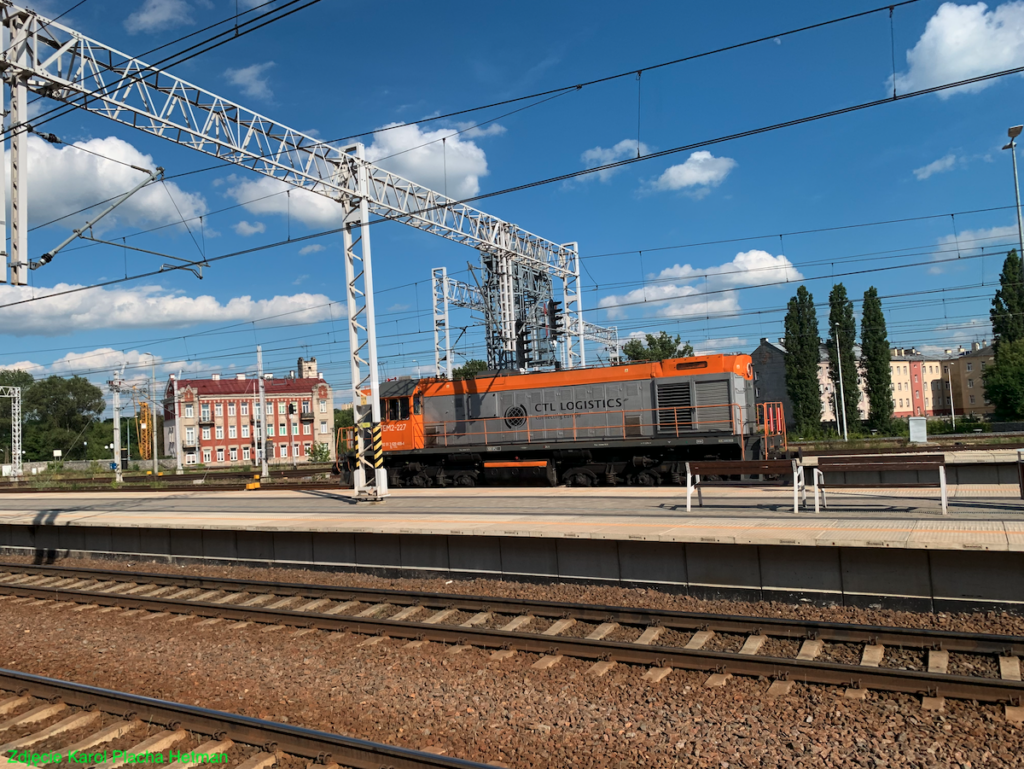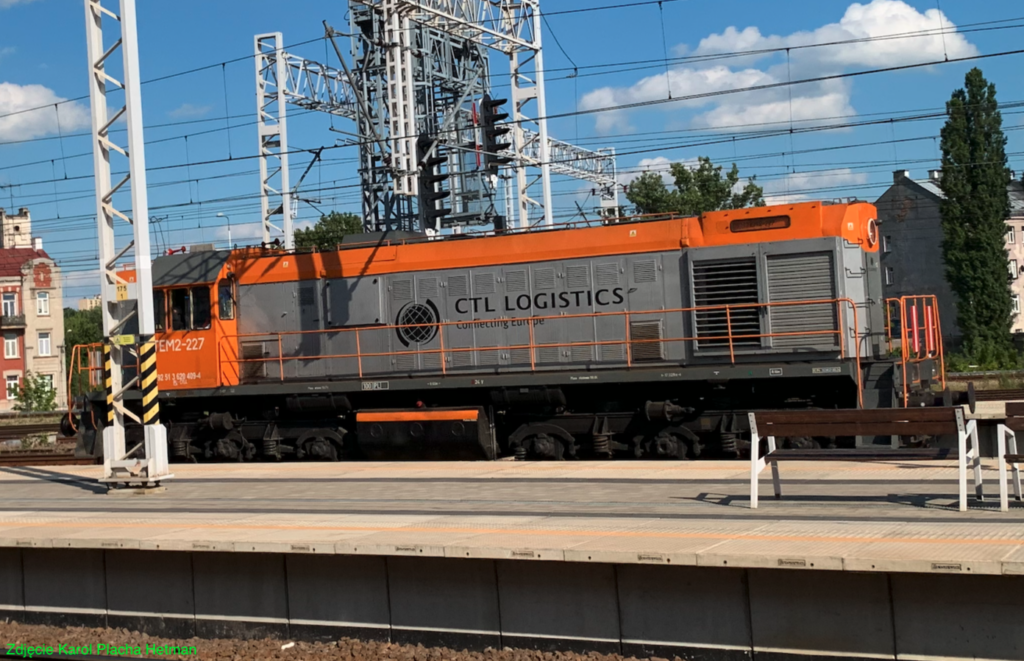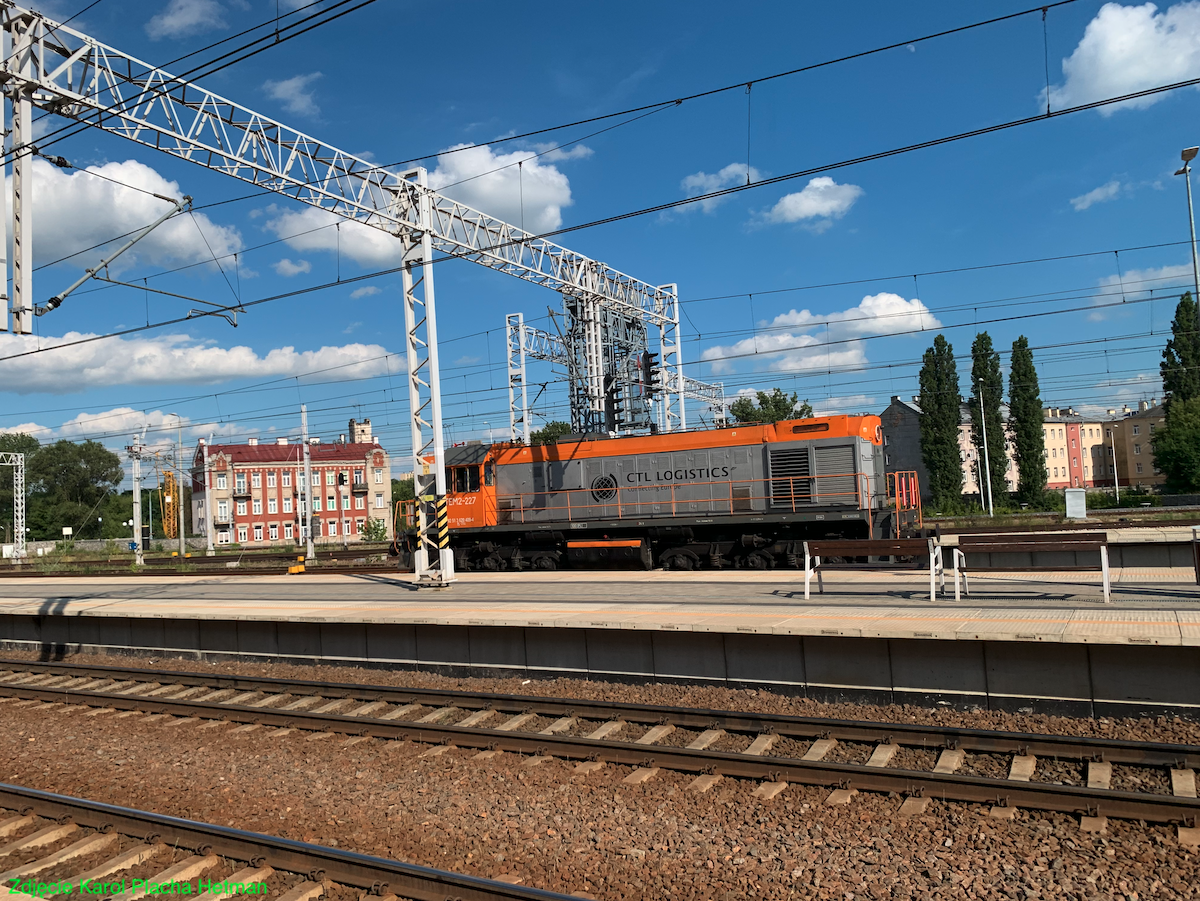Lublin 28-06-2024
The TEM2 diesel locomotive (Cyrillic TЭM2) is a heavy diesel shunting locomotive that was developed in the Moscow state and mass-produced at the Bryansk and Voroshilovgrad (Lugansk) plants. Production lasted from 1967 to 1989, and locomotives of this type were operated in Poland. On the PKP the locomotives had the designation SM48, and on the industrial railways TEM2. Other designations BMZ/ŁTZ TEM2.


Design history of TEM2, ST48.
The Soviet designation TEM2 is an abbreviation for: diesel (T) locomotive with electric transmission (E), shunting (M), second model. The design of the locomotive is based on the solutions used in the American ALCO RSD-1 locomotive, which was produced between 1942 and 1946. Many of these American locomotives worked in the CCCP as DA series (Soviet ДA). This was made possible by the Lend-Lease Act, which was approved by the Federal Act of 11 March 1941. The locomotive became the model for the Soviet TE1, TEM1 and TEM2 series locomotives. The TEM1 locomotive was produced from 1958, at Bryansk. In 1960, three prototypes of the TEM2 locomotive were built at the Bryansk plant, differing from the TEM1 primarily in their PD1M diesel engine and GP-300A alternator.
However, series production did not begin until 1967. The TEM2 locomotive became the basic shunting and industrial locomotive in the CCCP and was produced in 3,160 units. This number includes locomotives for the Soviet railways and dependent countries. The locomotives were produced for track widths of 1435 mm, 1524 mm and 1520 mm.
About 300 TEM2 locomotives were imported for the PKP between 1974 and 1988. The locomotives were mainly intended for use at transhipment stations near the border with the CCCP. They were entered in the register under the original TEM2 designation and entered service in 1974. The PKP gave the locomotives the Polish designation ST48. In railway jargon, the locomotive is referred to as “Tamara”. After 1990, private carriers imported about 130 more locomotives of this type to Poland. The main reason for this was the low purchase price of second-hand locomotives. In 2010, there were still around 350 locomotives in service, and of this number, more than 100 locomotives worked for PKP Cargo. Many TEM2 locomotives are in service on the Sand Railway.
The NEWAG company from Nowy Sącz is modernising these locomotives. All that remains of the original TEM2 / ST48 locomotive is: the spur, fuel tanks, bogies with modernised electric motors. The locomotive has a new driver’s cab, which is equipped with heating. Due to the lighter internal combustion engine, additional ballast has been fitted. The engine is more powerful, more economical and meets European Standards. Cameras have been fitted to the locomotive, due to the poor visibility from the driver’s cab. The new locomotives are designated 15D (1435mm track) and 16D (1520mm track).
TEM2, ST48 design.
The locomotive is built on a steel spur, which sits on two three-axle drive bogies. The front bogie and the rear bogie are of identical construction. From the centre axle of the rear bogie there is a drive to the speedometer. Each pair of wheels is driven. The combustion engine-main generator set provides the electric current that powers the electric motors that drive the locomotive’s wheelsets. The main generator also serves to start the internal combustion engine, working like an electric motor, drawing current from the batteries. From the shaft of the main generator, torque is transmitted via a clutch, to the compressor and via a V-belt transmission to the two-machine unit and fan for cooling the electric traction motors of the rear bogie. From the crankshaft of the internal combustion engine, on the side of the engine oil pump, the following are driven: the radiator fan via a bevel gear, friction clutch and pivot shafts, the cooling fan for the front bogie electric motors via a V-belt transmission, the water pump of the engine charge air cooling system via a pair of gears located in the fan gear. Under the locomotive spur is the main fuel tank.
The locomotive body consists of five compartments; radiator compartment, combustion engine compartment, high-voltage compartment, driver’s cab and battery compartment. Access to the technical compartments is through side hatches and via a removable roof.
In the driver’s cab there is: a control panel on which are mounted the control instruments and the control and measurement instruments of the power unit, the brake system and the hand brake drive. There is a toolbox in the cab. The initial series of TEM2 / ST48 locomotives had a rounded roof. Subsequent locomotives have a flat roof with chamfered sides. Shunting work is carried out by one mechanic, but on the track a two-man crew is necessary due to the limited visibility from the cab.
T-T data of the locomotive TEM2, SM48:
Co’Co’ axle arrangement. Service weight 116,000 kg. Length 17.03 m. Width 3.12 m. Height 4.65 m. Wheel diameter 1.05 m. Rated power 880 kW. Maximum tractive force 380 kN. Electric transmission (three-machine). Design speed 100 km/h. Axle load on the rails 196.2 kN. Fuel tank capacity of 6,000 litres. Matrosov brake system, modelled on Oerlikon. Electric traction motors; 6 x ED 118A, continuous motor power 105 kW. The locomotive has a multiple control system. There is no heating in the locomotive cab, and the operators use the heat generated by the internal combustion engine.
Internal combustion engine type PD1M; four-stroke, in-line, with turbocharger and intercooler, 6-cylinder, displacement 151,000 cm3, maximum power 1,200 hp, 750 rpm, engine weight 17,000 kg.
Written by Karol Placha Hetman
